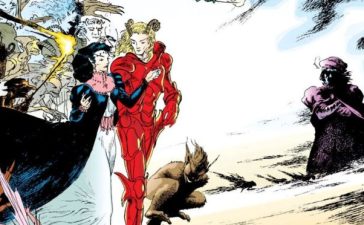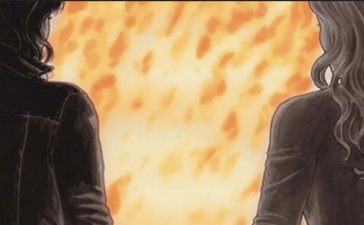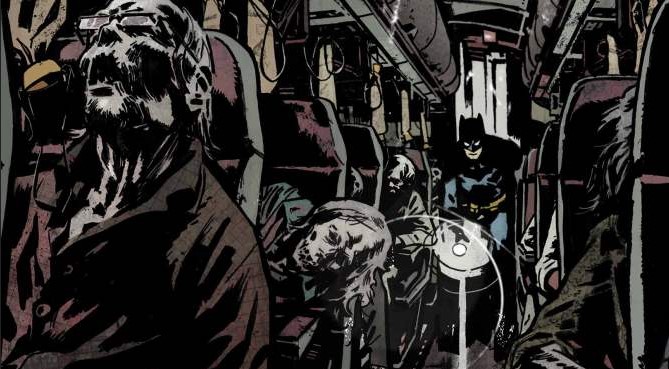
“Taking a Knife to the Nerve of the Moment”: An Interview with Benjamin Percy
Benjamin Percy writes riveting, thought-provoking fiction: his novel Red Moon uses werewolves to explore our fear of terrorism, The Wilding depicts a suspenseful family hunting trip in the wilderness, and his upcoming book The Dead Lands is a post-apocalyptic adventure story inspired by the historic Lewis and Clark expedition. Percy has written two issues of Detective Comics (#35 and 36) and will soon take on the DC Comics series Green Arrow with artist Patrick Zircher. Nothing But Comics emailed Percy to ask him questions about how he came to write comic books, his prose and comics work, and his plans for Green Arrow.
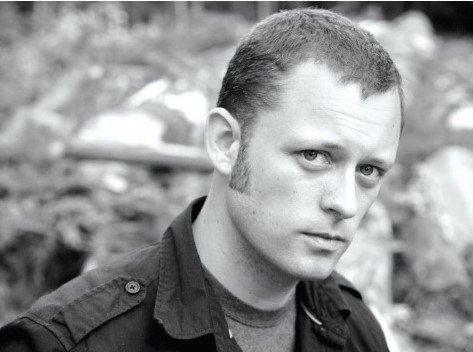
You are an award-winning prose writer, and you have written two issues of Detective Comics and will soon debut as the writer of the Green Arrow series. Could you tell us how you came to work for DC Comics?
I grew up an obsessive comics reader, and then I headed off to college and my bank account emptied and my credit card debt mounted and I stopped buying monthlies. Over the next few years, I would pick up the occasional trade, but it wasn’t a regular part of my reading diet. Then, in 2008, Scott Snyder started writing for comics. I knew Scott’s short stories—his collection Voodoo Heart blew me away—and we had corresponded by phone and email. He inspired me to hit my local shop more often, and I fell in love with several series: Fables, Y: The Last Man, Northlanders, Scalped, and his own American Vampire.
I had published three books (a novel and two short fiction collections) when I submitted my first series proposal: Red Moon. Mark Doyle was very kind to consider it for Vertigo, but ultimately passed. I changed the pitch to a novel, wrote the first seventy-five pages, and sold it to Grand Central/Hachette.
I was deep into novel writing and screenwriting and magazine writing assignments, but Doyle and I stayed in touch. I met him for coffee, toured the DC offices, and kept reading comics, hoping that one day I might get another shot.
That day came. Doyle said they needed a filler, a one-shot or two-parter at Detective Comics, so I dreamed up a Batman pitch and they teamed me with JP Leon. This was not only the most fun I’ve ever had at the keyboard, it was completely addicting.
I said I’d love more work and I sent off a few more pitches that almost got accepted. Then one day the phone rang, and it was Brian Cunningham asking if I’d be interested in pitching Green Arrow. My run at Detective had been a kind of audition. The editors had taken notice, and Patrick Zircher (the artist they had assigned to Green Arrow) had read both the Detective two-parter and my novel Red Moon, so he put me on the short list of writers he wanted to work with.
I read thirty or so back issues of Green Arrow and hammered out a twenty-page document that laid out a new direction for the series. They said yes. I couldn’t believe it. I can’t believe it. But my quiver is full of ideas and I’m ready to fire away.
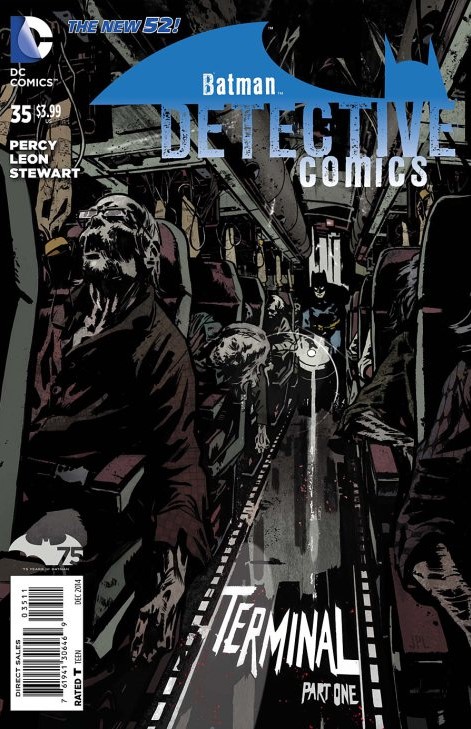
Writing comic book scripts is a different process from writing prose fiction. As a successful prose writer transitioning to the comics medium, what are your thoughts about the differences and challenges of writing for the comics medium, rather than prose?
Well, I’ve been writing screenplays (for TV and film) for several years, so that made the transition fairly easy. And maybe because I’m such a nut for movies and comics, my novels and short stories have always been intensely visual. I do think writing comics scripts is especially challenging though. In a screenplay, I might describe, say, a man crossing the kitchen to open the fridge and pour a glass of milk and mutter to himself, “I should have never left Emily.” Seems simple enough. But when you’re writing comics, you don’t have a scrolling camera: you have individual images. And those individual images have to say so much. Sometimes they’re accomplishing three or four things at once, not just pushing the story forward, but characterizing, attending to theme, and creating a visually arresting frame. And then you have to consider the transition work done between panels and between pages. And the limitation of the script—22 pages, five to seven scenes—which creates a need for efficiency, never a wasted moment. So that ten-second scene in the screenplay—in which the man walks across the kitchen and opens the fridge and pours a glass of milk and has some epiphany about his marriage—might become one panel or might get cut altogether.
What appeals to you about writing superhero comics?
When you’re a kid, you pin a towel around your neck and call it a cape, you leap off your deck and pretend to fly, you imagine your shadow as an enemy who must be vanquished. You want to be powerful. You want to make a difference, help others. You dream about becoming a superhero, and really that dream never dies—you just stop saying it out loud.
Every day, at the keyboard, I’m bringing that dream to life—for myself and for my readers. And that’s one of the reasons I’m tackling real world issues (alongside the fantastic) in my scripts. Through Batman, through Green Arrow, we’re all vicariously struggling with our personal, societal, cultural, political, religious hopes and fears and the headlines that haunt the newspapers.
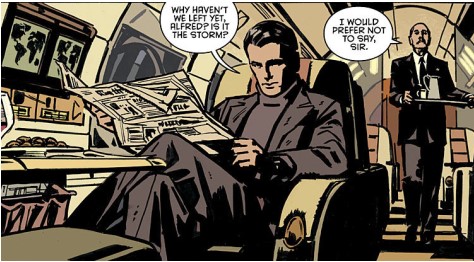
Before you began writing comics, were you an avid comics reader? Do you have any favorite comics titles that you would like to share?
Yes, as I said before, I grew up on comics and still have my ragged copies of Warlord and The Thing and Batman and X-Men and Aliens and Punisher and and and and (I’ve never been good about preserving my purchases—I love reading them too much.) I’m not sure how many EC Comics I own, but they pile up into a dark tower, and Tales from the Crypt and Vault of Horror have had a major impact on my artistic sensibility. Gaiman’s Sandman is one of the best things I’ve ever read (I’m not referring to comics exclusively—I mean if you consider novels, memoirs, poems, the written matter on the backs of cereal boxes, etc., it’s one of the best things I’ve ever read, period.) Alan Moore’s Saga of the Swamp Thing. Pretty much everything Brian K. Vaughan and Matt Fraction have written. Right now I’m following Saga, Batgirl, Southern Bastards, The Massive, and Wytches with interest.
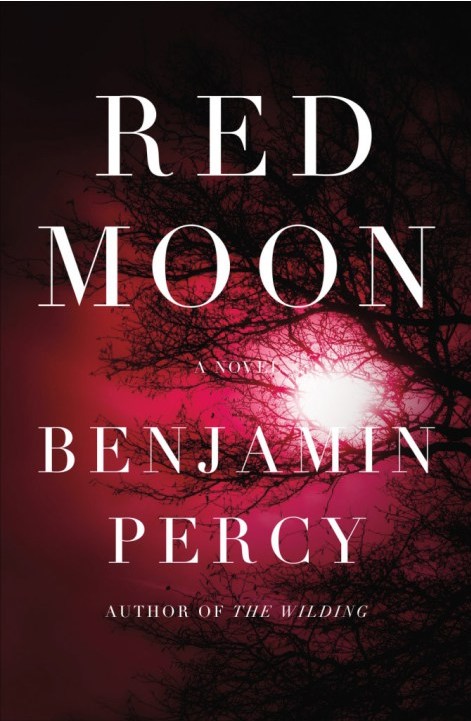
What authors influence your writing? For your comics work, are there any particular writers or creators that influence your comics writing?
I just listed off a number of comics writers, so I’ll tip my hat to filmmakers and fiction writers now. I’m influenced by everyone from Stephen King to Steven Spielberg, Margaret Atwood to Flannery O’Connor to Ursula K. LeGuin. My favorite movies include The Godfather, Jaws, The Shining, Raiders of the Lost Ark, The Empire Strikes Back, Rocky, The Exorcist—and my favorite novels include Blood Meridian, Jonathan Strange and Mr. Norrell, The Lord of the Rings, The Stand, The Goldfinch. I have a dark sensibility. I love a story that reads addictively, but I also want it told artistically with three-dimensional characters that read like real people and not paper-thin types.
If I’m modeling myself after anyone, it’s writers like Neil Gaiman and Brad Meltzer. Those who write across boundaries: novels, comics, TV, film, the occasional nonfiction assignment. I’m a storyteller, no matter the medium.
Some of your prose fiction has a strong horror element to it, and the two issues of Detective Comics that you wrote touch on readers’ fears of terrorism and contagion. Are you a fan of the horror genre?
I grew up on genre. I read—fanatically—fantasy, sci-fi, mysteries, thrillers, horror. Horror especially. The horror section in Powell’s Books in Portland, Oregon, was the shadowy playground of my teenage years—and my skin still tightens with excitement whenever I visit it. Richard Matheson, Peter Straub, Anne Rice, Shirley Jackson, Stephen King, Dean Koontz, John Saul, Robert R. McCammon.
Even when I’m not writing outright horror, you’ll find my stories are netted with spiderwebs and reddened with blood.
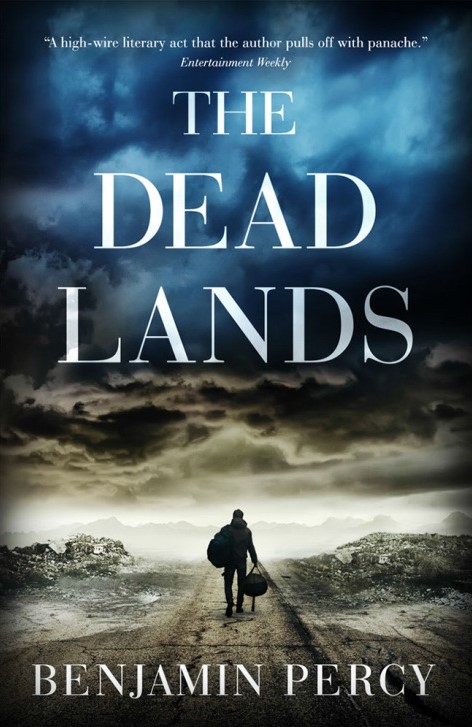
Your upcoming novel, The Dead Lands, has been described as “a post-apocalyptic reimagining of the Lewis and Clark saga.” Could you please tell us more about the characters and setting of the novel? What inspired you to use the historic Lewis and Clark expedition as the basis of the novel?
I grew up in Oregon — in the shadow of Lewis and Clark. My mother is obsessed with them — truly obsessed — and virtually every vacation we took involved some Lewis and Clark stopover. I visited Fort Clatsop with the same frequency some attend concerts. For my twelfth birthday, she gave me their journals, and I’ve read several other accounts (both fiction and nonfiction) of the expedition. I’ve known for years I wanted to write about them, but I didn’t know how. My original plan was to recreate their passage, with different people accompanying me along the way, and make it a tale of modern-day adventure. Then my wife very reasonably asked, “How long is that going to take?” So I canned that project and took a speculative approach instead.
The novel is a blend of Stephen King’s The Dark Tower series and The Lord of the Rings. A quest story that blends together horror, adventure, and fantasy. Only a husk remains of the world as we know it, and the expedition is crossing the dead lands, facing the unknown in order to reunite the states. There are human-sized albino bats, an ice labyrinth, and a mechanical owl — it’s a pretty wild ride.
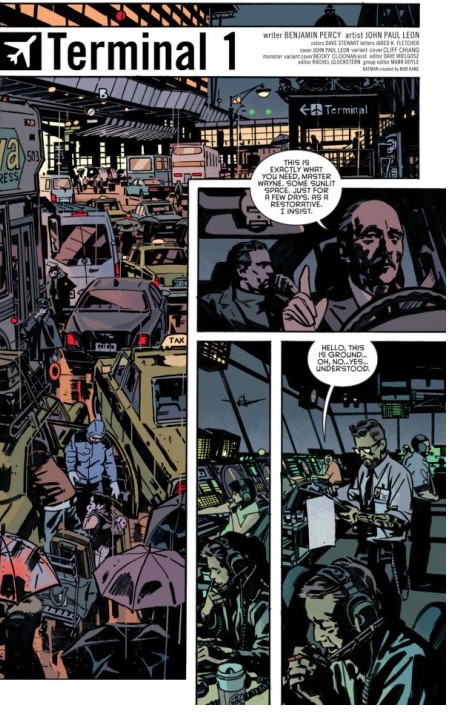
Reading Detective Comics #35 and 36 and the opening chapter of your novel Red Moon, I noticed that in both, you depict the strangeness of airports in order to create an unsettling effect in readers before a terrorist attack occurs, and both works also reference a foreign war as a cause of the terrorism. Is it fair to say that you, as a writer, are interested in exploring our concerns about foreign wars and terrorism in your fiction?
I travel a lot—to bookstores, universities, festivals, conferences—so I’m often trapped in the Kafka-esque limbo of airports. That’s where those two storylines came from—me dreaming darkly when seated in 13A, rocketing somewhere over the Midwest—but beyond that, I’m interested in the zeitgeist. Some of the most resonant fantasy stories channel the cultural anxieties of the moment. Frankenstein was born out of the Industrial Revolution, the fear of technology, the fear of man playing God. Dracula plays off Victorian prudishness. Godzilla tips its hat to post-atomic fearfulness. Invasion of the Body Snatchers came out of the Red Scare, McCarthyism.
So what do we fear right now? Disease. As the Ebola crisis recently proved, Americans are scared to death of germs. And terrorism (look no further than the aftermath of the Boston Marathon Bombing and how it dominated news and paralyzed us for weeks on end.)
I’m always thinking about this: taking a knife to the nerve of the moment. You’ll see something similar (though not about contagion or terrorism) in Green Arrow.
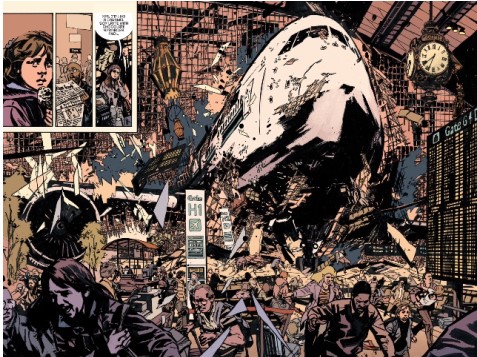
Let’s conclude this interview with a question about Green Arrow. You have already written two comics starring Batman, and you are about to tackle Green Arrow in an ongoing comics series. Is there anything you would like to share with us about your hopes or goals for writing Green Arrow’s adventures?
I can’t say too much—I’m not supposed to talk content or characters—but I will say that Patch Zircher and I are taking the series in a new direction. It has zero connection to the television show. We will be incorporating some of the Jeff Lemire mythology. The aesthetic will be dark and literary and packed with arresting visuals (Patch draws the way cinematographer John Alcott sees.) The other day Patch said to me, “You know what happened to James Bond when Daniel Craig took over? This is like that.” I sure hope people enjoy reading it as much as I enjoy writing it.
This is an exciting beginning for me, and my goal is not only to nail Green Arrow, but to pitch some original ideas and take on assignments in other established series. I love writing comics; this is, corny as this sounds, a dream come true. Especially compared to the Hollywood nightmare. Writers don’t get a lot of respect out there. If you don’t do what the brass ask of you, they simply fire you and bring someone else on board. And every project moves so, so slowly, prohibited by actor availability, special effects costs, endless and conflicting producer notes. Comics are so freeing, so pure by comparison. And the creative partnership—between artist and writer—is the most rewarding collaboration I’ve ever experienced.






